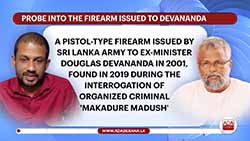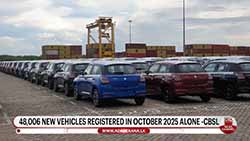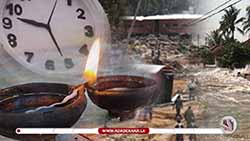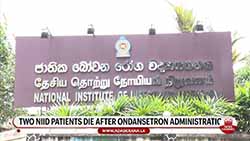Colombo Port City: What You Need To Know In A Nutshell and More
August 22, 2016 09:06 am
By Shamila Naleer
Clinching a top priority in the not-very-short list of development projects in Sri Lanka, the Colombo Port City has, indeed, been nudging its way into the limelight. Unsurprisingly, the project has its costs and benefits as well as the arguments that come along with the venture. But how does the new project vary from the old?
Introducing the Colombo International Financial City

Along with other progressions in the Colombo Port City, the project has also been renamed and is now known as The Colombo International Financial City (CIFC). However, prior to the CIFC, the concept initially surfaced in Lanka in 2004 under the Western Region Megapolis plan, after the Singaporean company, CESMA proposed that a project, not unlike Port City, be carried out.
Furthermore, China plays an eminent role in the genesis of the CIFC, through the world-renowned China Communications Construction Company Ltd (CCCC). The master developer of the project is the China Harbour Engineering Company Ltd (CHEC), which is a subsidiary of the CCCC, and the CHEC has undertaken, primarily, land reclamation and infrastructure activities.
According to the vision statement of the project, they aim to “create the ultimate ‘Gateway to South Asia’ on a solid foundation of sound business practices, leisurely human interaction and luxurious living”.
A Glimpse at the Bygone Port City

The Colombo Port City project was initially launched in September 2014 by Former President Rajapaksa and Chinese President Xi Jinping. The reclamation segment cost a titanic investment of approximately US$ 1.5 billion and it has been speculated that the overall investment could amount to over US$ 15 billion. Nonetheless, it is also assumed to attract a global investment of over US$ 5 billion into the country. But is it enough?
According to plans made, the Port City was a proposed offshore city, taking up over 230 hectares, which was to be built on reclaimed land abutting to the Galle Face Green. As far as levels of luxury go, the project anticipated the construction of opulent shopping areas, a mini golf course, sports complexes, deluxe hotels and apartments as well as a supposed Formula 1 race track. Not to mention, it also envisioned the construction of an extension of the Central Business District, a palatial marina and an extravagant boulevard.
- Taking A Look At the Specifics of the Old Agreement

As per the covenant signed in two years ago under the Rajapaksa regime, a land of 20 hectares was to be granted to the CHEC on a free hold basis and the remaining land was granted on a 99 year lease basis.
The duties and responsibilities of the vast project had been vested in the Ministry of Ports and Shipping. Moreover, the original pact stated that the Ports Authority Act was to be amended to enable the Ports Authority to acquire 62 hectares from the project company for its use and development agenda.
All investments in roads and utilities contained by the reclaimed area was the responsibility of the project company while providing all utilities and road infrastructure to the fringe of the site was the task assigned to the government itself.
The original agreement additionally mentioned that an Estate Management Company (EMC) fully owned by the government would manage, maintain and repair the common areas of the Port City by accumulating management charges from investors.
There was also the provision granted for night racing in the fundamental master plan. As aforementioned, the inclusion of the race track spoke for itself when taking how luxurious the intended Port City was meant to be.
The New Tripartite Treaty

The revised agreement was signed by the Secretary Ministry of Megapolis and Western Development, together with the Urban Development Authority and the project company (CHEC Port City Colombo Ltd), and officially replaced the Colombo Port City on August 12, 2016 as the Colombo International Financial City.
Two days prior to the signing of the new pact, the Cabinet approved a proposal to draft the required legislation to establish a financial city in Colombo as part of the project. It was also declared that the primary objective of the proposed financial city is to become a prominent financial hub in the region and it seeks to appeal to foreign investments from Indian, South Asian and Middle Eastern regions, as well as certain European countries. By making this city the financial nucleus of the area, the inflow of foreign capital will gradually intensify. Furthermore, the government anticipates the broadened employment opportunities for Lankans with the commencement of this project.
The Financial City was included in the Megapolis plan as well, under the Downtown Colombo segment.
- How the Tripartite Agreement differs from the Initial Pact

To begin with, no freehold land will be given to the Project Company as visualized by the original agreement and all lands allocated will be on leases granted by the Government and the Project Company will not get the land for a lease period of more than 99 years, whatsoever. Further, when the Project Company draws in investors to its lands, such areas will be leased to the third party investors on a 99 year lease as well.
The Government also declared that the entire reclaimed land of 269 hectares will be claimed as territory of Sri Lanka in accordance with the Lands Ordinance by President Sirisena. Subsequently, the reclaimed area will be announced as an area of authority under the Urban Development Authority Act and the planned CIFC law.
In short, the new agreement includes the following;
- The Project Company will allocate Rs. 500 million towards the fishermen’s income support program to the Ministry of Megapolis and Western Development to implement the curriculum in consultation with the Ministry of Fisheries and Aquatic Resources Development.
- In order to lighten the burden on the Government’s shoulders to provide for road infrastructure and utilities to the periphery of the site, the option of undertaking public-private partnerships through the Project Company will be explored further as a solution in the long run.
- Healthcare, hospitals, exhibition and convention centers will be included in the new agreement, and as the new name suggests, the new Colombo International Financial Centre will be included in the CIFC. Additionally, the Project Company has acceded to constructing the Financial Center on the land reclaimed first. They also agreed to make an investment in the building no sooner it becomes technically feasible to build on reclaimed land.
- The lands used for roads, parks, pedestrian walkways.etc. will be increased from 63 hectares to 91 hectares. This has been the main reason behind the growth of the reclaimed area from 233 hectares to 269 hectares.
- A new Joint Venture company between the Project Company and a faction designated by the Government will embark on the Estate Management responsibility on a self-financing basis.
- The inclusion of night racing as per the initial agreement has been totally scrapped out under the new treaty.
What Happened With the EIA?

The EIA refers to the Environment Impact Assessment report with regard to the project. According to the Central Environmental Authority (CEA), the National Environment Act introduced a procedure known as EIA as part of a strategy to achieve sustainable development.
By definition, the EIA “is a simple and straightforward process of first predicting the potential impacts of development activities on the natural and social environment, and then suggesting measures to prevent or minimize negative impacts and to enhance positive impacts.”
However, in the case of the Port City project, the EIA report has not been welcomed with open arms. Last year, it was reported that environmental organizations were on the verge of taking legal action against the project.
A collaborative group against the project, known as People’s Movement Against Port City, had much to say, including the EIA which was made was the “worst” they have seen in some time.
The group also criticized PM Wickremesinghe stating that he is acting against his words and the promise he made to the people who voted for him.
After particular conclusions made by an elected Evaluation Committee in March 2015, the Cabinet of Ministers decide to suspend the ongoing construction. During this suspension, a Supplementary Environment Impact Assessment (SEIA) was drawn up in December 2015.

Basically, this is what the report revealed;
- “The total foreign direct investment (FDI) in the reclamation stage of the Port City covered under this SEIA is envisaged at around $1400 million, the largest ever single FDI approved by the BOI to date. The financial investment in the project therefore has no Government guarantees.
- Since a sudden suspension of any coastal land reclamation project is unsafe and ill‐advised prior to protecting what has been constructed, the Project Company made a written request to the GOSL to carry out protection in connection with the partially constructed breakwater to ensure that works completed will not be destroyed due to natural causes during the period of suspension. The Project Company received the required permission to undertake protective works via a decision of the Cabinet of Ministers and has been carrying out such works throughout the suspension period.
- This SEIA report draws the conclusion that due to the construction of the Colombo South Harbour, the incremental environmental impacts from the construction of Colombo Port City is minimal/negligible at the reclamation site and the coastal zone to the North and South of the site. The Project will also in not contribute to coastal erosion. For erosion to occur the proposed project must create an obstruction to the long shore drift or must transfer sediment from the dynamic coastal zone to deep waters. Neither of these occurs with the Port City Project as demonstrated in numerous modeling studies carried out as described above for the Colombo South Port EIA, the Port City EIA of 2011 and this SEIA.
During construction and post construction period of the South Port there was no overall negative impact on the coastline or on the natural ecosystems. Throughout the construction process including dredging and reclamation, a wide range of parameters including “continuous” water quality measurements were made.”
Winding Up…..

Projects, constructions, amendments or basically any modification that takes place in the country does not merely see the light of day easily. There are controversies, protests and sometimes, downright crazy theories. Nonetheless, we should remember that everything has a good side and not just the bad. It has been said by many that the City will act as a magnet towards copious foreign direct investments into the country.
In a piece published on the Colombo Port City website, it is said that a number of business leaders believe that the construction of the project should proceed and that the City would be ultimately thrive as successful ventures like the beloved Kandalama Hotel and the South Harbour Expansion Project.
We mustn’t forget the manmade Palm Islands in Dubai either. These isles have become a major tourist attraction and even have world famous celebrities relaxing in their condos on its beach. The intense dredging required to construct the islands significantly altered the wave, temperature and erosion patterns in the Persian Gulf, and an entire square mile of coral was slain. On the other hand, developers dropped two American fighter jets on the seafloor to create new reefs and claim that Palm Jumeirah’s breakwater would bring more marine life to the area.
Obviously, there have been environmental concerns especially about the damage that could happen to the coastal line as well as reefs. Moreover, the destruction of the Unawatuna beach due to the breakwater that was not built properly has tainted the minds of some. However, many (especially the youth) complain that Lanka has no good malls, especially after enjoying a holiday in another country; as they say, the grass is greener on the other side. Considering another quote for this context; without sacrifice there is no victory. The road to development is tricky, never easy and does require some sacrifices along the way.













